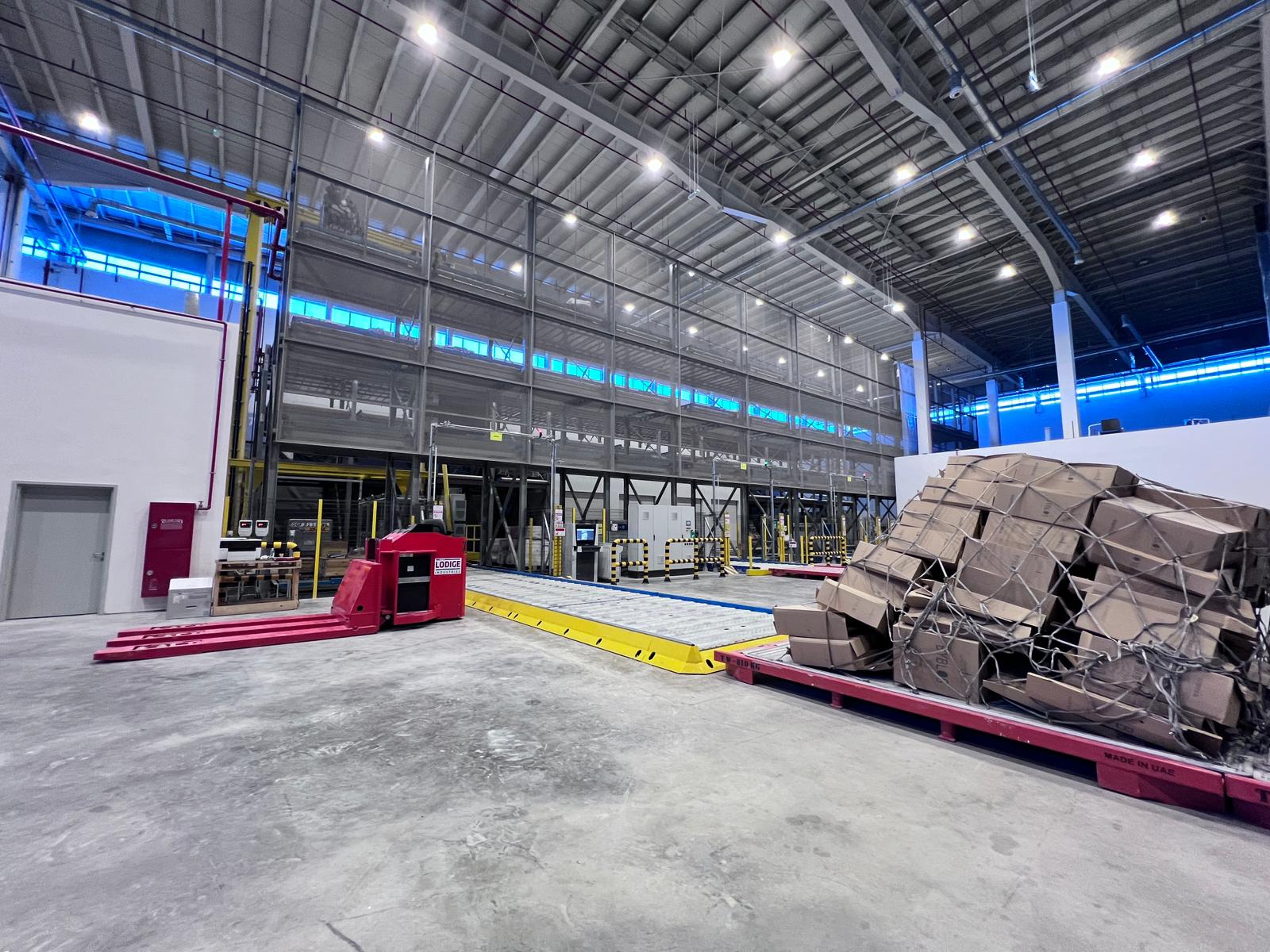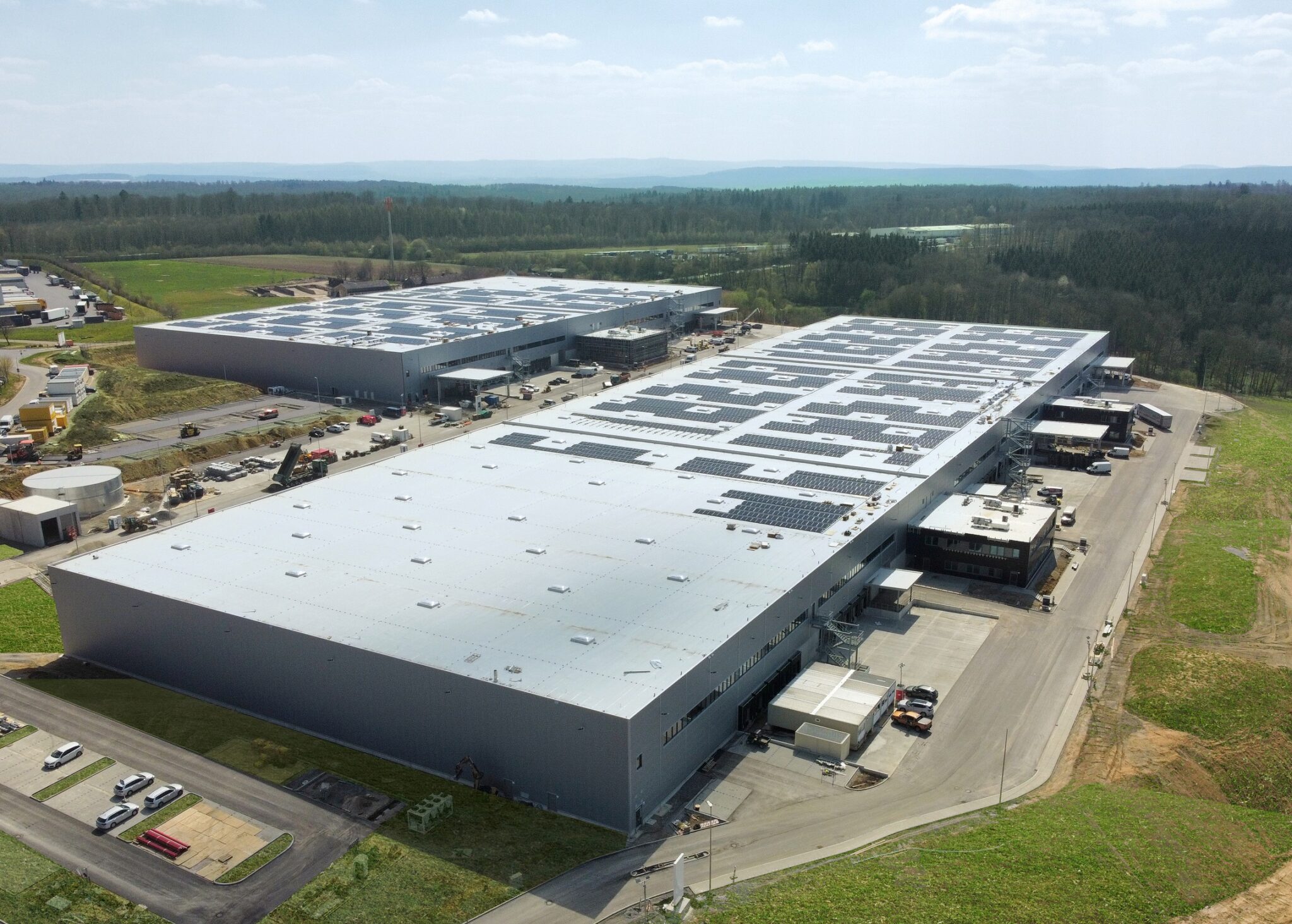LogiMAT 2025 is once again filling over 120,000 square metres in all ten exhibit halls of the Messe Stuttgart convention centre in March for the industry meet-up. Global players, SMEs, and startups are coming together March 11–13 to showcase a comprehensive collection of the latest intralogistics products and innovations, including many never before seen anywhere else in the world, and to offer solutions to the challenges of today.
LogiMAT, the International Trade Show for Intralogistics Solutions and Process Management, invites logistics professionals, system developers, and equipment manufacturers to kick of the 2025 trade show season with this year’s theme of “Passion for Solutions.” The global intralogistics community from over 80 countries will gather once again, March 11–13, in the ten fully booked exhibit halls of the Messe Stuttgart convention center, including the entire East Entrance. Over 1,500 exhibitors from around the world, including 200 attending LogiMAT for the first time, will present industry professionals with their latest products, solutions, and innovations for efficient intralogistics across over 120,000 square meters of exhibit space. “LogiMAT has a special role to play this year amid global disruptions and the profound transformation currently unfolding in industry and manufacturing,” reflects LogiMAT Exhibition Director Michael Ruchty from Munich-based event organizer EUROEXPO Messe- und Kongress-GmbH. “The key themes of artificial intelligence (AI), sustainability, and skilled labor shortages are creating various challenges as the dominant global trends. At LogiMAT, exhibitors representing all industry sectors will present solutions and their latest developments to confront these challenges effectively.”
System performance and sustainability
Shelving system and equipment manufacturers, systems integrators, and material handling technology providers will be on hand in Hall 1 (including the gallery level) plus Halls 3, 5, and 7 to present new compact storage systems for pallets and containers, new pouch sorters, system shuttles with new features, and much more. What’s traditionally the largest exhibitor group is focusing on AI-supported automation and linking system performance more closely with sustainability. Flexible, high-efficiency system solutions are designed to enhance system life and support sustainable investments through reusable components. The integration of robotics technology in the product portfolio of several exhibitors also ensures a smooth collaboration between humans and machines.
AGVs, AMRs, and carrybots for unrestricted transport options
In the intralogistics industry, industrial robots are considered a key factor in optimizing processes and helping to counteract the shortage of skilled labor. The latest developments in the field of picking robots can be viewed in the gallery in Hall 1. In addition to shuttle vehicles for shelf storage systems, several machinery and equipment manufacturers will also be presenting new and improved service robots for untethered intralogistical transports. These automated guided vehicles (AGVs), autonomous mobile robots (AMRs), and carrybots will be largely concentrated in Hall 8 at LogiMAT 2025. The specialized manufacturers there are leaning in on innovations in transport and picking robots designed to alleviate the labor shortage. In addition, the Mobile Robotics User Forum returns in 2025 to the gallery level in Hall 6, where members of Forum AGV will offer unbiased expert advice to AGV users and anyone interested in mobile robotics.

Forklift manufacturers present innovations and world premieres
The next generation of AGVs, traditional industrial trucks, and assistance systems also sets the tone for forklift manufacturers, exhibiting in Halls 9 and 10. All major international industry players will once again be represented at LogiMAT 2025 with their latest product portfolio. Manufacturers have already announced the introduction of new 3- and 4-wheel forklifts, new counterbalance forklift trucks for the up-to-two-ton segment, a new series of electric side forklifts, and the market launch of the world’s first automated cobot for pallet transport. Exhibitors also plan to unveil innovations in alternative powertrains and share insights into the near and distant future of intralogistics using robots, drones, and autonomous vehicles. In Halls 7 and 9, visitors can also find the latest innovations from suppliers of cranes, gates, loading technology, and fire protection systems and solutions.
Sustainable, efficient processes
Hall 6 features the latest packaging technology and container and storage solutions, with a special emphasis on sustainability in the wake of recent changes to EU packaging regulations. This is reflected in the range of products for right-sized packaging, strapping machines with paper straps, smart reusable packaging, and reusable labels. New high-performance packaging lines, advanced mobile transport systems, innovative scanner hardware, RTLS and RFID solutions, e-paper, radio-controlled digital labels, and sensor-supported high-speed gates are also designed to streamline warehouse processes.
AI-based features and algorithms
The foundation for the integrated exchange of information in intralogistics and supply chains is smart IT infrastructure coupled with AIDC technology. Software companies are coming to LogiMAT 2025 to present the latest solutions for cutting-edge warehouse, transport, and supply chain management with fully integrated data exchange. This year’s focus in Hall 4 is on the coordination of efficient processes, comprehensive cloud solutions that reduce capital expenditure, the modularization of systems, and AI-based functions and algorithms for smart data filtering and analysis. The innovations on display enable packaging and packaging scheme optimization, comprehensive simulations with virtual go-lives, digital twins for analyzing and optimizing production and logistics processes, and the AI-supported optimization of processes for exchanging trailers, containers, and swap bodies.
Identification and data capture in the flow
Exhibitors from the AIDC industry complete the picture with their presentations in Hall 2. AIM-D returns to present the Tracking & Tracing Theatre live event. Visiting professionals can also take in the latest applicators, semi- and fully automated labeling and label printing systems for identification directly in the material flow, and the newest breakthroughs in security labels, e-paper, RFID, and reusable labels. Data capture systems on display will include the latest handheld scanners, scanning gates, measuring and weighing systems, and near-field and RTLS solutions.
Sneak peek at emerging trends
“LogiMAT welcomes exhibitors and industry professionals to this pivotal event for the global industry right at the start of the trade show season, offering a reimagined accompanying program, a sneak peek at emerging trends, and the knowledge needed to plan new projects with confidence,” says Exhibition Director Ruchty. “LogiMAT offers a broad base of useful information and the opportunity to experience tomorrow’s products and solutions. That’s why, amid the ongoing challenges of automation and digital transformation together with geopolitical upheaval, we anticipate further growth in visitor numbers and look forward to three exciting days of LogiMAT in Stuttgart.”
similar news













